A reduction in styling, as well as impact on the planet, the phrase “less is more” is never more relevant than now when specifying kitchen furniture
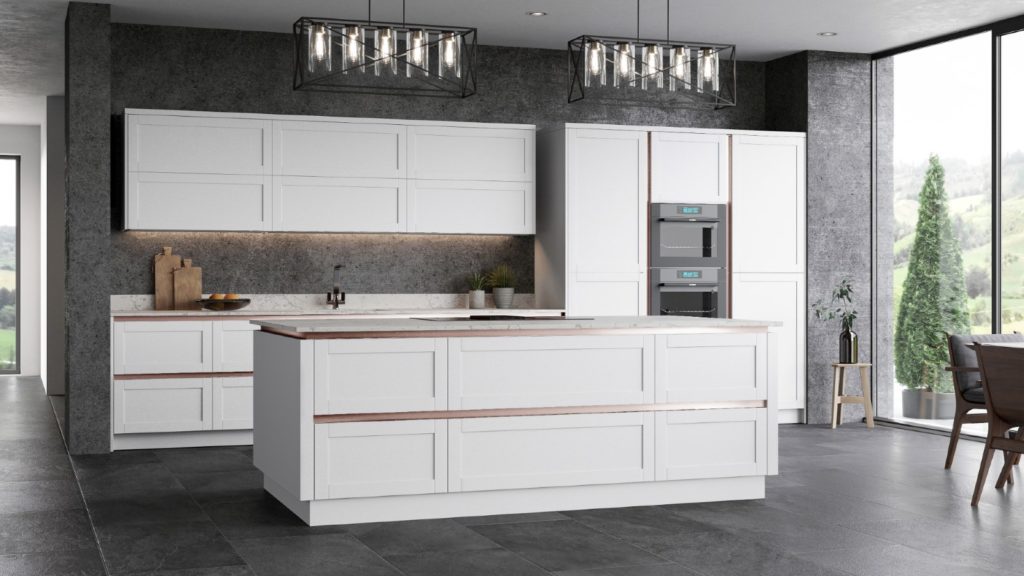
The Stratto narrow frame Shaker door from TKC is shown in White and features the Vero handleless rail system in Rose Gold, responding to the trend for metallic accents
Often associated with pioneer of modernism and architect Ludwig Mies Van der Rohe, the phrase “less is more” is never more relevant than now for kitchen design.
It could equally refer to the styling with pared-down aesthetics or to the environmental considerations and footprint furniture leaves on the planet.
Sponsored Video
Consumers are interested in both, as head of UK operations for Rotpunkt Matt Phillips comments: “The sheer variety of new materials, colours and finishes available have ushered in a new era of design creativity with end users demanding beauty and utility, as well as sustainability.”
Design progression
Of course, handleless furniture look has been popular for some time and it remains a key look for kitchens now.
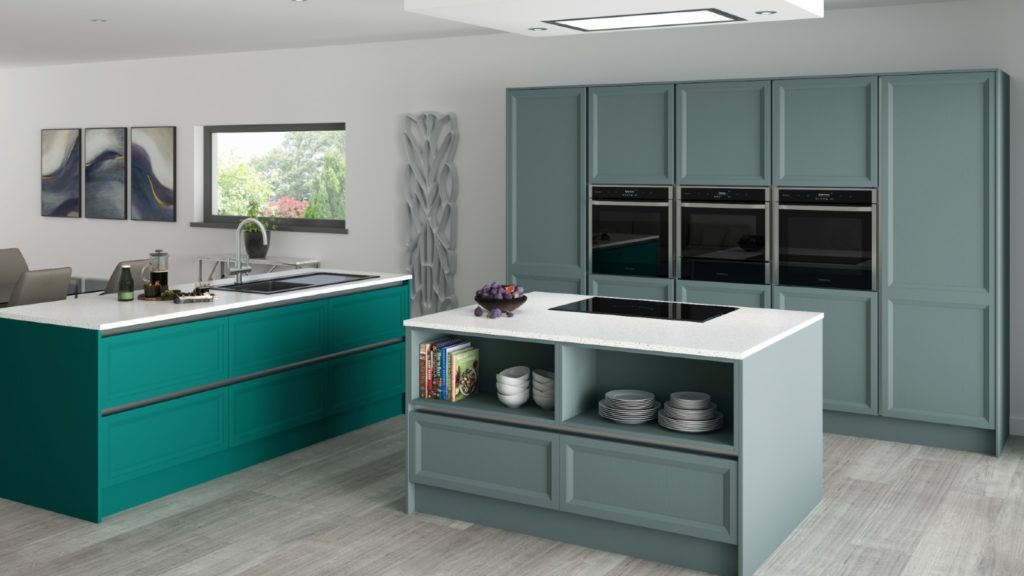
Rimano is the latest addition to the Crown Imperial porfolio, with a bevelled design shown here in Sage and Mint. The furniture is available in a palette of 22 colours.
Managing director of Daval Simon Bodsworth explains: “My feeling is that it is a go-to shorthand for homeowners who prefer a contemporary style and it is also an extremely versatile and practical style which appeals to all age groups.”
It could be argued, it is because the look has continued to evolve from white banks of units to now embrace colour, material mixes and texture, keeping the look bang up-to-date.
National sales manager for UK & Ireland Richard Turner charts the movement: “Five to 10 years ago the look for a handleless kitchen very much centred on being white, purist and pared back, then came the move towards organic neutrals of greys and sands, and from that point to a darker, moodier palette where the deocr and texture are intended to be prominent.
And, with a move towards more eclectic interiors, the clean lines of handleless furniture have even embraced more classical styles, such as Shaker but with reduced framing.
CEO of Scavolini Fabiana Scavolini comments: “Handleless doors have found their way even into more traditional designs. A Shaker-style door has a simplicity that pairs beautifully with a finger grip.”
And national sales manager for UK & Ireland Richard Turner adds: “This design progression has enabled the handleless style to be successful for modern living where it’s less about creating the kitchen and more about the furniture style in the kitchen and living areas overall.”
Large and small
And handleless kitchen furniture is flexible, as the style not only suits large schemes but is also a practical solution for more compact projects.

Based on a traditional Shaker style, the Oaten kitchen from Caple has a modern, slimline 68mm frame for a contemporary look. The five-piece door has a matt foil wrapped finish and comes in a choice of six colours
Kitchen category manager for LochAnna Kitchens Sinead Trainor continues: “Large projects that incorporate open plan living tend to create a statement, are design driven and minimalist, these spaces are a talking point with guests.
“Smaller projects use the space practically and hide appliances in order to create the feeling that there is more space. Both of these goals can be aided with the addition of handleless cabinetry.”
Fabiana Scavolini agrees: “The way in which the handleless kitchen has evolved in style means it can be used to make good use of any space available.
“In a compact galley kitchen, for example, not having protruding handles can free up precious centimetres.”
Lessening environmental impact
The reduction in styling is mirrored by a lessened impact on the environment, which is a growing concern for designers and their clients.
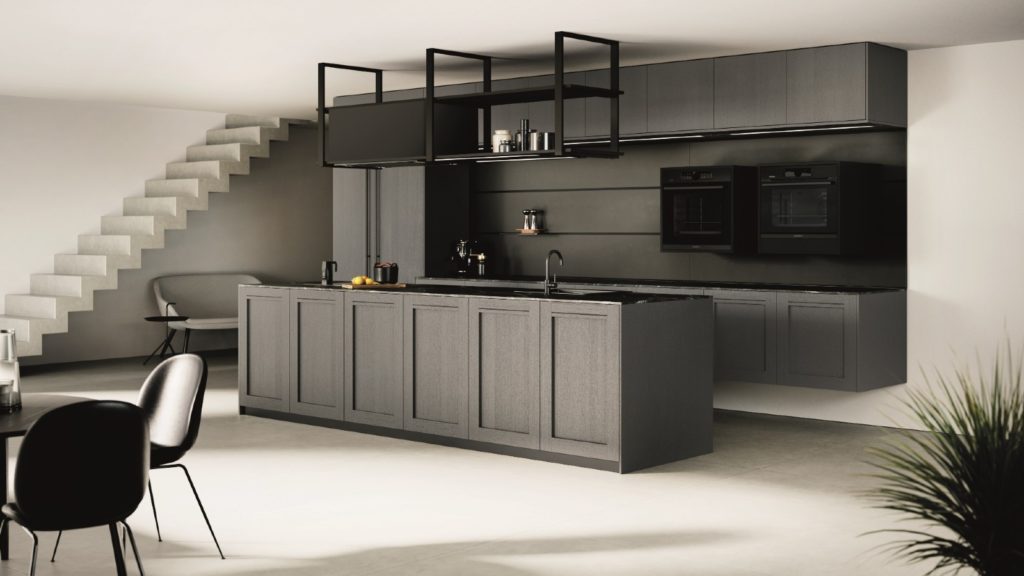
The Rotpunkt Comfort FL door is a sold oak, handleless Shaker-style door with integrated profile. It is shown in a Lava finish.
Kitchen manufacturers have worked hard to minimise or completely negate their carbon footprint, from using biomass systems to heat factories, recycling waste and investing in offsetting projects.
Matt Phillips of Rotpunkt says: “For us, sustainability is part of our business planning and who we are, so we can help retailers to help their customers create dream kitchens with a clear conscience.
“There is so much scope to educate consumers about the benefits of choosing sustainable furniture and to ensure that is clearly labelled so that consumers and installers can see its provenance at a glance.”
Recycled wood
Certainly, consumer interest is piquing in sustainable issues, as reflected by a Europe-wide survey carried out by appliance manufacturer Beko on people’s attitudes and concerns about sustainability and the environment.
It found after recycling, buying sustainable products was the next effective solution. And kitchen furniture manufacturers have “green products” which prove consumers don’t have to compromise on design for sustainable solutions.
Simon Bodsworth comments: “I think the pandemic has focussed attention on raw materials and sustainability is definitely at the forefront of the design conversation.
“Recycled wood is becoming a big part of furniture design for eco-friendly kitchens.”
In 2020, Rotpunkt introduced the greenline BioBoard Gen2 which uses chipboard that consists of up to 90% recycled wood and Scavolini uses raw ecological panels made from 100% recycled wood for its carcases.
While the Renzo kitchen from Daval is not only made from recycled materials but when they reach the end of their lifespan can be fully recycled in turn.
Sinead Trainor of LochAnna Kitchens adds: “Part of our product development for 2022 is looking at more sustainable and ‘eco’products.”
Circular economy
The ability to reuse or recycle kitchen to reduce landfill has also become a real talking point for the industry, particularly as furniture is designed for long-lasting use.
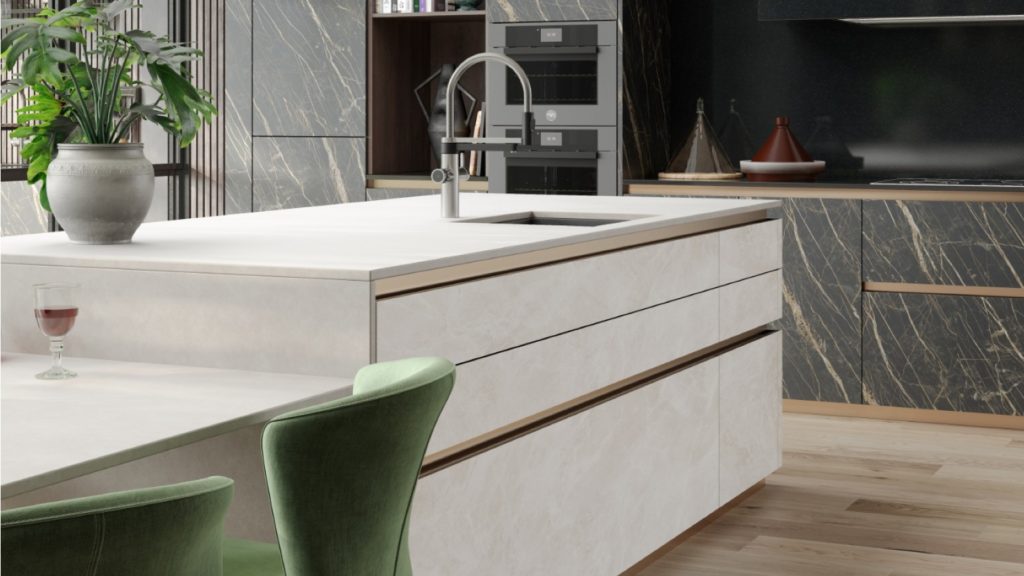
Adding to its Q-line kitchen range, Mereway Kitchens has introduced five finishes, including Tempesta Ceramica and Diamante Ceramica. It is available in handleless and touch-to-open options.
Fabiana Scavolini comments: “A kitchen with a long lifespan automatically means lower environmental impacts.”
She continues: “We advise our customers to re-use their kitchen in a holiday home or garage, or by donating to a charity or selling it on.” And the company has certification to attest to 96% of its products have circularity.
Mereway and Symphony have both recently joined up with The Used Kitchen Company Kitchen to encourage retailers to sell ex-displays and urge customers to recycle their old kitchens.
Managing director of Mereway Mark Mills explains why: “Prolonging the life of a Mereway kitchen makes total sense and is definitely win-win for our retailers and their customers, the Used Kitchen Company buyers and of course the environment.
“Our kitchens are built to last and we know that they can give many years of service and pleasure beyond that of their first “owner!”
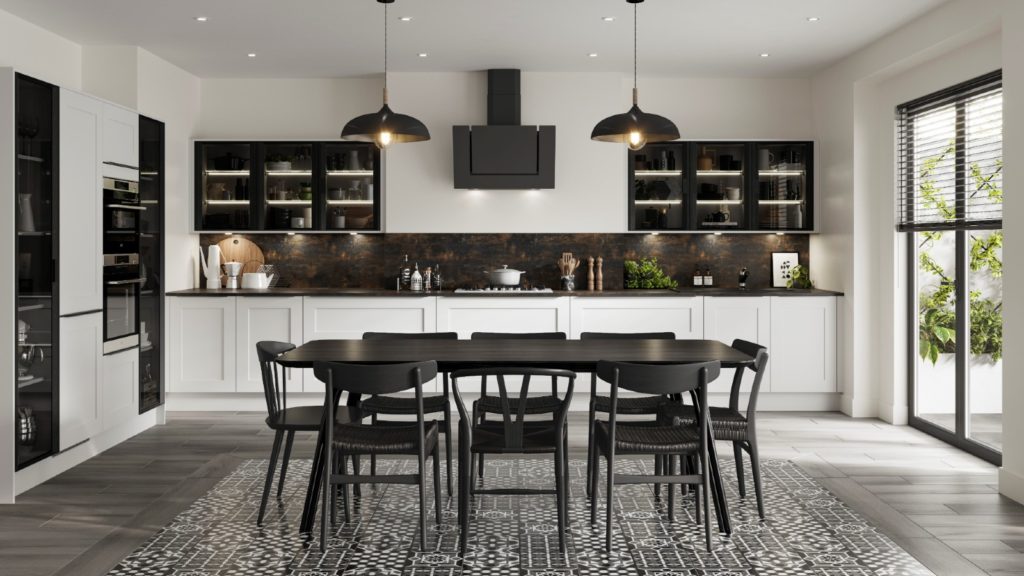
Inspired by classic Shaker design, the Inline Princeton Collection from Symphony features a framed but handleless door in a matt painted finish.
And marketing and retail sales director of Symphony Simon Collyns agrees adding: “Extending the life of our furniture through this collaboration makes sense for us, our retailers, their customers and the environment so we’re excited to be involved.”
Whatever the style of kitchens will come into fashion, sustainability is only going to grow as an integral part of kitchen design as manufacturers and retailers look to recycle, reuse and reduce materials.
Matt Phillips of Rotpunkt concludes: “I think that consumer demand and the climate emergency is moving to a point where key trends will converge in kitchen design, which will encompass everything from wellness, technology and sustainability.”



